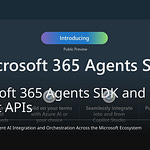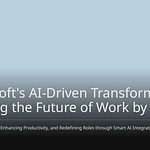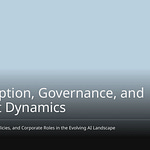In today’s busy workplace, unlocking hidden knowledge can significantly enhance your productivity. A 2021 study showed that about 50% of workers might hide information when asked, making collaboration challenging. Microsoft 365 Copilot helps address these issues by offering tools like summarizing documents and displaying data across various apps. To elevate Copilot’s capabilities even further, Graph Connectors play a crucial role. They seamlessly connect legacy and siloed data into Microsoft 365, enabling you to uncover hidden knowledge and work more efficiently.
Key Takeaways
Find hidden knowledge in your organization with Graph Connectors and Microsoft 365 Copilot.
Boost productivity by linking separate data sources. This helps with better decisions and quicker access to information.
Make onboarding easier by cutting the time new workers need to be productive. Some companies see a 30% decrease.
Keep data safe and follow rules by managing access to outside data sources using Graph Connectors.
Check and keep data quality high to build trust in AI tools like Microsoft 365 Copilot. This leads to more users accepting it.
Copilot’s Default Limitations
Microsoft 365 Copilot has great features. However, it has some important limits when accessing outside data. Without this access, Copilot may seem incomplete and not very helpful in your daily tasks. Here are some main limits to think about:
Data Access Issues: You might find it hard to spot problems with sensitive data access without using outside data. This limit can cause you to miss chances to use valuable insights.
Content Prioritization Problems: Copilot may not show the most important information well. Because of this, you could waste time going through less important or sensitive data.
Increased Oversharing Risks: If users cannot see data access permissions, they might accidentally reveal security issues. This can lead to sharing sensitive information that should stay private.
Inconsistent Functionality: Differences in Copilot’s abilities across apps can cause confusion. This inconsistency may make you trust the tool less, making it harder to depend on its results.
Change Management Challenges: Not focusing enough on change management can slow down user adoption. If users do not fully accept Copilot, you may not get a good return on investment.
The types of outside data that Copilot cannot access by default include:
These limits can cause big productivity gaps. For example, a trial by the Australian Government showed that while productivity went up, Copilot’s reliability went down because of incomplete data. When used with poorly managed or siloed content, Copilot’s effectiveness drops, leading to wrong and risky results.
Copilot’s results depend a lot on the quality and completeness of the data it uses.
Without complete data coverage, the results from Copilot can be inconsistent and untrustworthy for decision-making.
Not having access to different enterprise data sources limits Copilot’s ability to give a full view of organizational knowledge.
The Business Impact of Missing Knowledge
Digital Hide-and-Seek
In big companies, you often play a frustrating game of digital hide-and-seek. There is a lot of unstructured data, like emails, notes, and logs, that stays unused and hard to find. This happens because many companies do not have good tools to look at this data. Because of this, important insights get lost.
Think about these common situations where information hides:
Identity Management Issues: Misconfigured network shared drives lead to 33% of successful data access attempts.
Shadow SaaS: Unmonitored applications create hidden risks due to a lack of visibility.
Manual Processes: Relying on self-reporting can lead to inconsistencies and increased shadow SaaS.
Unstructured Data: Large amounts of unstructured data often go unused because it is not easily accessible.
The results of this knowledge gap can be serious. For example, British Petroleum (BP) started a knowledge management program after the Deepwater Horizon oil spill. This program led to a 20% drop in incidents by sharing important safety information. Similarly, Roche cut its drug development time by 30% through good knowledge sharing. These examples show how important it is to unlock hidden knowledge for business success.
Erosion of Trust in AI
When you cannot access all the information, it hurts trust in AI tools like Microsoft 365 Copilot. Missing records of interactions can create incomplete audit trails. This can lead to problems during regulatory checks and big fines. Also, Microsoft Copilot needs well-organized and accurate data. Poorly organized data can give wrong outputs, which can be dangerous for decision-making.
Audit logs are important for tracking access and changes. If these logs fail, you hide important details and hurt transparency. This lack of trust can slow down user adoption and limit how well AI tools work in your company.
By fixing these problems and using Graph Connectors, you can improve the reliability of your AI tools and encourage a culture of knowledge sharing.
Unlocking Hidden Knowledge with Graph Connectors
Graph Connectors are a strong tool for finding hidden knowledge in your organization. They help you combine old and separate data into Microsoft 365. This makes Microsoft 365 Copilot even better. Here’s how Graph Connectors offer safe and flexible solutions:
Secure and Scalable Solutions
Graph Connectors let you bring in data from many places. This includes on-premises file shares and third-party systems. This connection improves the AI features of Microsoft 365 Copilot. Here are some main benefits:
You control which outside sites Copilot can reach, keeping things safe and compliant.
You can create special agents to use certain data sources, making file shares smart.
Graph Connectors improve access, helping you get the most out of managed data for personal experiences.
By using Graph Connectors, you can make a single data interface. This interface gives you one access point for easy searching and working with documents across different platforms. You can index data into Microsoft’s semantic index. This helps provide relevant answers across applications.
Real-World Examples of Impact
Organizations that have used Graph Connectors see big improvements in their work. For example, a financial services company combined years of customer histories from old systems into Microsoft 365. This connection helped their teams find important information quickly. This led to faster decisions and better customer service.
Another example is an HR department that made its onboarding process smoother. By linking different data sources, they cut the time spent looking for information by more than 50%. This efficiency saved time and improved the overall onboarding experience for new employees.
Setting Up Graph Connectors for Microsoft 365 Copilot
Setting up Microsoft Graph Connectors for Microsoft 365 Copilot might look hard, but it can be easy if you follow a clear plan. Here’s a simple guide to help you start.
Step-by-Step Installation Guide
Prepare Your Environment: Make sure you have the right tools and permissions. You will need:
Visual Studio Code
Microsoft 365 Agents Toolkit for Visual Studio Code
Azure Functions Visual Studio Code extension
Node.js (supported versions: 18, 20, 22)
A Microsoft 365 Copilot license or a Microsoft 365 Developer tenant with custom apps enabled
Admin consent in Microsoft Entra admin center as a Global administrator
Role of Search Administrator or Cloud Application Developer to see the connector in the Microsoft 365 admin center
Access Requirements: Check that you have the following access:
Admin access: Global admin, Search admin, or Copilot admin roles in the Microsoft 365 admin center
Data source credentials: Necessary credentials and permissions for the data source
Service account (if needed): Make sure it has the right roles or permissions
Install the Connector: Follow the specific steps for your chosen connector. This may include changing settings in the Microsoft 365 admin center.
Test the Connection: After installing, check that the connector is working correctly. Look for any connection problems or missing items in the index.
Best Practices for Configuration
To make data easier to access and keep it safe, think about these best practices:
Follow the connector-specific playbook for setup to avoid problems.
Use connection overview cards to check connection health and find failures.
Review and fix errors using the Errors tab and Now Assist for more details.
Use dashboard metrics to regularly check data quality and performance.
Discover and update connectors often to ensure accurate data mapping and stable integration.
By following these steps and best practices, you can improve how Microsoft 365 Copilot works with Graph Connectors. This connection not only makes data easier to access but also boosts security in your organization.
Tangible ROI from Extending Copilot
Using Graph Connectors with Microsoft 365 Copilot can give your organization great returns on investment. You will see clear benefits in areas like onboarding new employees and making decisions.
Improved Onboarding Efficiency
When you use Graph Connectors, you can make the onboarding process easier for new workers. This connection cuts down the time it takes for them to start being productive. Some companies have seen onboarding time drop by up to 30%. This change helps new employees feel more confident and engaged, so they can help out sooner.
To see how this integration helps, think about tracking these important numbers:
Enhanced Decision-Making
Graph Connectors also help your organization make better decisions. By connecting different data sources, you get a full view of your organization’s knowledge. This connection helps you find important links between data points, making it easier to spot patterns and insights.
Here are some key ways Graph Connectors help with decision-making:
They give a clear view of operations by linking internal information.
You spend less time gathering data manually.
A steady framework helps teams understand the data behind decisions.
Being able to manage and check data quality means you can trust the information you use. This trust is very important for making good decisions. By using the data reasoning abilities of Graph Connectors, you can make smart choices that help your organization grow.
Using Graph Connectors with Microsoft 365 Copilot brings many benefits to your organization. Here are some important advantages:
You should look into these strategies and use them in your organization. This way, you can boost productivity and get better access to important knowledge. Use the power of Graph Connectors to make your Copilot experience a strong tool for smart decisions and smooth workflows. 🚀
FAQ
What are Graph Connectors?
Graph Connectors let you bring in data from outside sources into Microsoft 365. They help link old systems and separate data, making Microsoft 365 Copilot even better.
How do I set up Graph Connectors?
To set up Graph Connectors, get your environment ready, install the connector, and check the connection. Follow the step-by-step guide for more details.
Can Graph Connectors improve data security?
Yes! Graph Connectors follow the current Microsoft 365 permissions. They keep sensitive information safe while allowing access to needed data.
What types of data can I connect with Graph Connectors?
You can connect many types of data, like on-premises file shares, third-party apps, and old systems. This connection helps reveal hidden knowledge in your organization.
How can I measure the ROI from using Graph Connectors?
You can track numbers like onboarding speed, less search time, and user activity. These numbers help you see how Graph Connectors affect your organization’s productivity.













